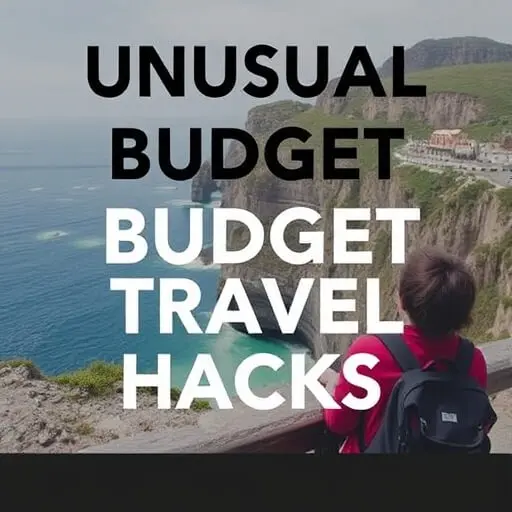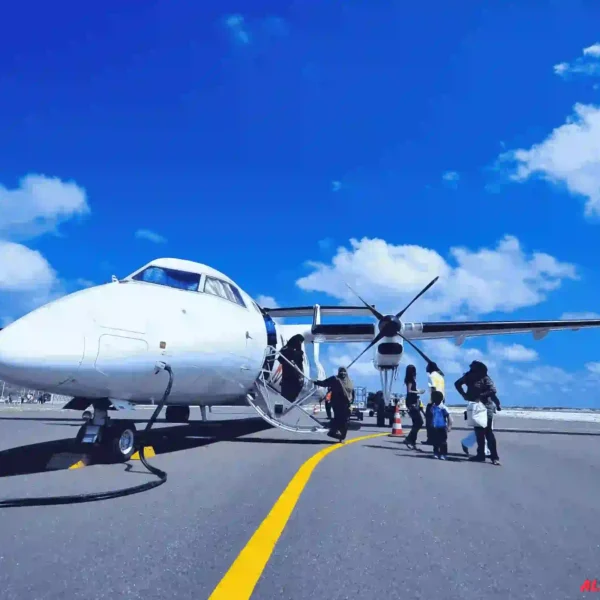India’s rich cultural diversity, stunning landscapes, and vibrant cities make it a bucket-list destination for travelers. But with so much to plan and pack, it’s easy to forget something important. That’s where our ultimate travel checklist for India comes in! Whether you’re a first-time traveler, a backpacker, or heading out on a family adventure, this guide will ensure you’re fully prepared for every aspect of your trip.
Why You Need a Travel Checklist for India
Traveling to India is an unforgettable experience, but it also comes with unique challenges. From navigating diverse climates to ensuring you have the right documents, a well-prepared India travel checklist is your key to a smooth and stress-free journey.
India’s vibrant culture, bustling cities, and varied landscapes require careful planning. Without a proper checklist, you risk missing out on key experiences or facing unnecessary complications like forgotten essentials, last-minute document issues, or packing mismatches for the weather.
Why a Travel Checklist is Essential for India:
- Diverse Climates: India’s weather varies drastically—from the snowy Himalayas to the tropical beaches of Goa. A checklist ensures you pack the right clothing for every region.
- Document Requirements: From visas to vaccination certificates, India has specific entry requirements that must be prepared in advance.
- Health and Safety: A checklist helps you remember essentials like medications, travel insurance, and emergency contacts.
- Cultural Preparedness: Knowing what to pack (e.g., modest clothing for temples) and what to expect can enhance your experience and show respect for local customs.
How to Prepare for Your India Trip
- Use this India travel checklist to stay organized and avoid last-minute stress.
- Explore our guide on How to Plan a Budget-Friendly Trip to India for tips on saving money while maximizing your experience.
By following a tailored checklist, you’ll be fully prepared to embrace India’s beauty, culture, and adventures without any hiccups.
1. Essential Documents and Travel Planning
Why Having the Right Documents is Crucial? Before you start packing for India, securing the right travel documents is the first and most important step of your trip. Missing or incomplete paperwork can cause delays, fines, or even denial of entry at immigration. India is a welcoming destination, but proper paperwork is crucial for a hassle-free entry. Here’s what you need to keep essential documents for India travel to avoid any stress upon arrival:
- Passport and Visa
- Travel Insurance
- International Driver’s License
- Health Records and Vaccinations
- Currency and Payment Methods
Passport and Visa for India
✅ Passport Requirements:
- Your passport must be valid for at least six months from your date of entry into India.
- It should have at least two blank pages for entry and exit stamps.
- If your passport is close to expiration, renew it before applying for a visa to avoid any issues.
✅ Visa Options for India:
Depending on your nationality, you may need a visa for India. Luckily, the process is straightforward:
- E-Visa: Available for citizens of over 160 countries, including the US, UK, and EU nations. You can apply online, and approval usually takes 3–5 business days.
- Tourist Visa: If you’re planning a longer stay, you may need to apply for a regular tourist visa at the Indian embassy or consulate in your home country.
- Visa on Arrival: Only available for select nationalities. Check India’s official immigration website for eligibility.
Pro Tip: Always carry a printed copy of your e-Visa approval when traveling, as immigration officers might request it.
📌 If you are Indian and planning to go abroad, check out Visa Free Countries for India for exploring the world travel options without visa restrictions.
Travel Insurance for India
✅ Why You Need It:
Travel insurance is essential for any international trip. However, it might not be a mandatory requirement for visiting India, but it’s highly recommended due to unpredictable situations like:
- Flight cancellations or delays
- Lost luggage or stolen valuables
- Medical emergencies (hospital visits, accidents, food poisoning)
✅ What to Look for in a Good Travel Insurance Plan:
- Coverage for medical expenses (including hospitalization)
- Trip cancellations and interruptions
- Personal liability protection
- Coverage for adventure activities (if you plan to trek, scuba dive, or do other adventure sports)
📌 Pro Tip: Compare travel insurance plans from providers like World Nomads, Allianz, and SafetyWing to find the best option based on your needs.
Always choose a policy that includes coverage for health and emergency evacuation. Also, check 8 benefits of travel insurance for India trip to ensure you’re fully covered.
International Driver’s License (if Renting a Vehicle)
✅ Is It Necessary?
If you plan to rent a car or motorbike in India, an International Driving Permit (IDP) is highly recommended.
- Some rental agencies may accept a foreign driver’s license, but an IDP is legally required for non-Indian license holders.
- For scooters and motorcycles, ensure you have the proper licensing and insurance, as traffic laws are strictly enforced in some areas.
✅ How to Get One:
- You must apply for an IDP in your home country before traveling.
- It is usually valid for one year and must be carried along with your original driver’s license.
If you plan to drive during your trip, an international driver’s license might be necessary. Though it’s not always required for short stays, it’s a good idea to have one if you intend to rent a car or motorbike. Explore more Essential documents for India travel if you does not want to miss anything.
Health Records and Vaccinations
Certain vaccinations may be recommended or required for travel to India. Make sure to consult with your healthcare provider well in advance of your trip. Carry a copy of your vaccination records, including those for hepatitis, typhoid, and malaria, if applicable. Read our comprehensive guide on Health tips for India trips in details.
Currency and Payment Methods
India’s official currency is the Indian Rupee (INR). While credit and debit cards are widely accepted, it’s important to have cash for small purchases, especially in rural areas. ATMs are widely available in cities, but if you’re heading to remote locations, carry enough local currency. Mobile wallets like Paytm and Google Pay are commonly used, so having a local SIM card can be helpful.
Copies of Important Documents
Make a travel document checklist and create a backup travel documents plan for unexpected situations.
✅ Always carry:
- Printed and digital copies of your passport and visa
- Emergency contacts and address of your country’s embassy in India
- Proof of onward travel (some airlines may request this before boarding)
- Hotel reservations and important booking confirmations
📌 Pro Tip: Store digital copies in Google Drive, Dropbox, or email in case of emergencies.
Having all your essential travel documents for India prepared in advance saves you from unnecessary stress and lets you focus on enjoying your trip. Double-check all paperwork at least two weeks before departure, and keep both digital and hard copies for extra security.
2. Packing for India’s Climate
India’s climate varies depending on the region and the season, so pack accordingly.
Why Packing Smart Matters for Travel in India
India’s diverse climate means that what you pack depends heavily on when and where you’re traveling. From the scorching summers of Rajasthan to the chilly winters in the Himalayas and the unpredictable monsoon rains, having the right gear ensures a comfortable trip.
Let’s break it down by season so you can pack efficiently.
- Summer (March to June): Light, breathable clothing made of natural fabrics like cotton is ideal. Choose light-colored clothes to keep cool.
- Winter (November to February): If you’re visiting northern India or high-altitude areas, pack warm clothing. In contrast, southern India remains warm year-round.
- Monsoon (June to September): Waterproof jackets, quick-drying clothes, and sturdy waterproof shoes are essential for this season.
Explore travel checklist of packing for India in winter that will make you comfortable to travel everywhere. Also, read the guide on Best Time to Visit India for Budget Travelers.
Clothing and Personal Items
India’s climate is diverse, ranging from tropical heat to chilly winters and monsoons. Knowing what to wear will help you stay comfortable and respectful of local customs. In fact, you can explore our What to wear in India according to destinations and seasons.
Comfortable Shoes and Accessories
Health tips for India trip are most important to ensure you are not going through any bad experience. India’s streets can be uneven, so pack comfortable shoes suitable for walking. Sunglasses, hats, and scarves are essential accessories for sun protection.
Cultural Considerations
In India, modest clothing is recommended, especially when visiting religious sites such as temples, mosques, and churches. Women should avoid wearing revealing clothes, while men should also steer clear of shorts in such places. A scarf or shawl can be useful for covering your head when required.
3. Health and Hygiene Essentials for India
Maintaining good health during your trip is key to having an enjoyable experience.
Why Health Precautions Matter
Traveling to India is an unforgettable experience, but the climate, food, and hygiene conditions may differ significantly from what you’re accustomed to. A little pre-trip preparation and the right hygiene habits can help you stay healthy and fully enjoy your journey. Lets check some health precautions for India travel.
Medications and First Aid Kit
Bring a small first-aid kit with common over-the-counter medications for India trip.
✅ What to Bring:
- Prescription medications (carry extra doses and a doctor’s note for customs).
- Pain relievers (ibuprofen or paracetamol for headaches, fevers, or aches).
- Anti-diarrheal medicine (Delhi Belly is real—Imodium or activated charcoal can help).
- Electrolyte packets (to rehydrate quickly if you get sick or experience heat exhaustion).
- Motion sickness pills (for long train or road trips).
- Antibiotics (consult your doctor about carrying broad-spectrum antibiotics for infections).
If you take prescription drugs, ensure you have enough for the duration of your stay, along with a doctor’s note explaining the medication.
🛡️ Pro Tip: Pharmacies in India are well-stocked, but specific brands may not be available. Bring your own essential meds to avoid any issues.
Mosquito Repellents and Preventing Infections
Mosquito-borne diseases, like dengue and malaria, are common in some parts of India, so don’t forget to pack a strong insect repellent. Sunscreen with a high SPF is also crucial, especially if you plan to explore India’s sunny regions.
✅ Stay Safe from Mosquito-Borne Illnesses:
- Use strong mosquito repellent with DEET or picaridin.
- Wear long-sleeved clothing and light-colored outfits in the evenings.
- Sleep under a mosquito net if staying in rural areas or budget accommodations.
- Consider anti-malarial medication if traveling to high-risk regions (consult a doctor).
✅ Vaccines to Consider Before Traveling:
- Hepatitis A & B
- Typhoid
- Tetanus & Diphtheria
- Rabies (if planning outdoor adventures)
- Japanese Encephalitis (for long rural stays)
🛡️ Pro Tip: Schedule your vaccinations at least 4–6 weeks before departure to ensure immunity.
Water & Food Safety in India
Staying hydrated is essential, but tap water in India may not always be safe to drink.
✅ How to Avoid Stomach Issues:
- Drink only bottled, filtered, or boiled water (carry Travel-Friendly a reusable filtered bottle).
- Peel your fruits to avoid potential contamination.
- Choose busy food stalls with high turnover (a sign of freshness).
- Use hand sanitizer or antibacterial wipes before eating.
- Avoid raw salads and street food that hasn’t been freshly cooked.
🛡️ Pro Tip: Avoid ice cubes, as they may be made from tap water.
Sun Protection & Heat Management
✅ Beat the Indian Heat:
- Wear sunscreen (SPF 50+). The sun in India can be intense, especially in summer.
- Stay hydrated by drinking at least 2–3 liters of water daily.
- Take breaks indoors to avoid heatstroke.
- Carry a scarf or hat to protect yourself from extreme sun exposure.
🛡️ Pro Tip: Coconut water is a natural electrolyte booster—cheap and widely available!
Restroom Hygiene & Sanitation
To maintain hygiene while traveling, hand sanitizers and wet wipes are handy for cleaning hands before eating, especially in areas where water may not be readily available for washing. Here are hygiene tips for India travel.
✅ What to Expect & Prepare For:
- Public restrooms vary in cleanliness, so carry toilet paper and wet wipes.
- Hand sanitizer is essential—soap isn’t always available.
- Learn to use a squat toilet, as some public restrooms may not have Western-style toilets.
🛡️ Pro Tip: Some travelers carry a small bottle of Dettol or disinfectant wipes for extra hygiene.
Final Health Tips for India
✅ Buy travel insurance that covers medical expenses, just in case.
✅ Know the nearest hospital or clinic in your destination city.
✅ Listen to your body—rest if you feel unwell and seek medical help if needed.
Check out How to Travel Safely on a Budget in India for additional safety-related insights.
4. Electronics and Gadgets for India
In today’s digital age, staying connected and capturing memories is part of every travel experience. So, Electronics for India travel are necessary in which here are the essential electronics to bring along.
Why the Right Tech Matters
India is a vibrant, dynamic country where staying connected and powered up is crucial. From navigating bustling cities to capturing breathtaking landscapes, having the right electronics enhances convenience and safety during your trip.
Power Bank and Universal Adapters
Electricity fluctuations can occur in India, and outlets might differ from what you’re used to. A power bank ensures you never run out of battery while out exploring. Don’t forget to add these items in your travel checklist.
✅ Essential for Uninterrupted Power:
- Power banks (10,000mAh+): A lifesaver when exploring rural areas or enduring long train rides.
- Universal travel adapter: India uses Type D and Type M plugs, with a 230V supply. A universal adapter ensures your devices stay compatible.
- Voltage converter (if needed): Some foreign appliances (e.g., American 110V devices) may require a converter.
🛡️ Pro Tip: Load up on power early in the day—frequent power cuts can occur, especially in remote regions.
Mobile Phone and SIM Card
A local SIM card is a cost-effective way to stay connected. You can purchase one at the airport or in mobile stores across the country. Make sure your phone is unlocked before traveling in India.
✅ Stay Connected at Local Rates:
- Unlocked phone: Ensure your phone is unlocked to use a local SIM.
- Best SIM providers: Jio, Airtel, and Vi (Vodafone-Idea) offer the best nationwide coverage.
- eSIM option: If your phone supports eSIM, consider using Airalo or Nomad for instant activation.
📌 Where to Buy?
- Get a SIM at the airport (slightly pricier but convenient).
- Local telecom stores require passport and visa copies for activation.
🛡️ Pro Tip: Download Google Maps offline—Indian streets can be tricky to navigate!
Camera and Accessories
India’s vibrant culture and stunning landscapes deserve to be captured. A camera for India travel with extra batteries and memory cards is a must for documenting your adventure.
✅ Capture Every Moment:
- DSLR or mirrorless camera: Ideal for professional photography.
- GoPro or action camera: Perfect for adventure activities like trekking and rafting.
- Smartphone with good camera: High-end phones like the iPhone 15 Pro or Samsung S23 Ultra can replace bulkier cameras.
📌 Must-Have Camera Accessories:
- Extra SD cards & batteries (long travel days mean limited charging opportunities).
- Gimbal or tripod (for vlogging or steady landscape shots).
- Dustproof bag (especially if traveling to desert areas like Rajasthan).
🛡️ Pro Tip: Always ask permission before photographing people, especially in rural areas.
These are Must-have items for India travel if you want to get best experience. Check out these must-have items for photography in India.
Portable Wi-Fi & VPN
If you rely heavily on the internet, a portable Wi-Fi device can provide constant connectivity without the hassle of finding local hotspots.
✅ Internet Access Anywhere:
- Portable Wi-Fi device: Ideal for those needing consistent, high-speed internet (e.g., freelancers, digital nomads). Options like Skyroam or Travelwifi work well.
- VPN service: Some websites (like VoIP services) may be restricted. A VPN like NordVPN or ExpressVPN ensures secure browsing and access to blocked content.
🛡️ Pro Tip: Free public Wi-Fi isn’t always safe—use a VPN for secure browsing!
Noise-Canceling Headphones & Entertainment
✅ For Long Journeys & Busy Streets:
- Noise-canceling headphones (Bose, Sony) to block out traffic noise.
- E-reader or tablet (Kindle, iPad) for long train/bus journeys.
- Netflix, Spotify, or YouTube Premium (download content offline for entertainment).
🛡️ Pro Tip: Trains and buses in India can be noisy—good headphones are a game-changer.
Security & Smart Gadgets
✅ Travel Smart & Safe:
- RFID-blocking wallet to prevent digital theft.
- Bluetooth tracker (Apple AirTag, Tile) to keep tabs on luggage.
- Mini flashlight for power cuts or dark alleyways.
🛡️ Pro Tip: Keep a USB flash drive with digital copies of important documents.
Final Tips for Electronics in India
✅ Bring a multi-port USB charger to charge multiple devices at once.
✅ Keep your gadgets secure in crowded areas (metro stations, markets).
✅ Back up photos and data regularly to avoid loss.
📌 Ready to go in India? Check the Best Time to Visit India for Budget Travelers for seasonal travel insights.
5. Safety and Security Tips for India Travelers
India is generally safe for tourists, but like any destination, it’s important to stay aware of your surroundings. So, here are some Safety tips for India tourists who are passionate to travel and explore India.
Stay Safe & Smart While Traveling in India
India is a diverse and welcoming country, but like any travel destination, staying cautious and well-prepared is key to a smooth experience. Here’s how to stay secure throughout your journey.
Emergency Contact Numbers
Familiarize yourself with emergency contact numbers, such as the police, ambulance, and fire services. It’s also a good idea to have the contact details of your country’s embassy or consulate in India.
✅ Save These Important Numbers:
- Police: 📞 100
- Ambulance: 📞 102
- Women’s Safety Helpline: 📞 1091
- Tourist Helpline (Ministry of Tourism): 📞 1363 (Available in multiple languages)
- Uber/Ola Safety Helpdesk: Accessible via the ride-hailing app.
Stay updated on local news and government advisories, especially if you’re traveling to remote or conflict-prone areas.
🛡️ Pro Tip: Keep a printed list of these numbers in case your phone battery dies.
Keeping Valuables Secure
Avoid displaying valuables like expensive jewelry or cameras in public. Use a money belt or a hidden pouch for important documents, and always be cautious in crowded areas.
✅ Minimize the Risk of Theft:
- Keep cash and cards in separate places (consider an RFID-blocking wallet).
- Use a money belt or an anti-theft backpack for extra security.
- Avoid flashing expensive gadgets in crowded areas like markets and public transport.
🛡️ Pro Tip: If approached by persistent street vendors or beggars, politely decline and walk away confidently.
Reliable Transportation
While taxis, rickshaws, and trains are widely available, always choose reputable transportation options. For safety, use ride-hailing apps like Uber or Ola in larger cities. Read more about safe transport options in India.
✅ Safe Travel Options:
- Ridesharing Apps: Uber & Ola are best for city travel—safer than unregulated taxis.
- Prepaid Taxis: Available at airports and railway stations; always get a receipt before boarding.
- Public Transport: Metro systems in Delhi, Mumbai, Bangalore, and Hyderabad are safe and efficient.
- Train Travel: Book tickets in AC classes (1AC, 2AC, or 3AC) for comfort and safety.
🚫 Avoid: Accepting rides from strangers or using unlicensed auto-rickshaws late at night.
🛡️ Pro Tip: Always share your ride details with a trusted friend or family member.
Be Cautious in Crowded Areas
✅ Stay Alert in Busy Places:
- Major attractions like the Taj Mahal, Red Fort, and Jaipur’s markets can get overcrowded—be mindful of pickpockets.
- Be wary of travel scams, such as taxi drivers claiming your hotel is “closed” and taking you elsewhere.
- Use hotel safes for passports and extra cash instead of carrying everything.
🛡️ Pro Tip: If someone insists on helping you (e.g., at an ATM or train station), politely refuse unless it’s an official staff member.
Stay in Safe & Verified Accommodations
✅ How to Choose a Safe Stay:
- Opt for hotels or guesthouses with good reviews on Booking.com, Agoda, or Airbnb.
- Look for accommodations with 24/7 reception, CCTV security, and verified credentials.
- Women travelers should consider female-friendly hostels or hotels with security features.
🚫 Avoid: Cheap, unverified guesthouses or staying in deserted areas alone.
🛡️ Pro Tip: Carry a door stopper alarm for extra safety in budget accommodations.
Food & Water Safety
✅ Avoid Stomach Issues:
- Drink only bottled or filtered water—avoid tap water, even in hotels.
- Stick to freshly cooked street food and avoid raw salads or ice cubes.
- Carry activated charcoal or probiotics to help with digestion.
🚫 Avoid: Ice cubes in drinks unless made with purified water.
🛡️ Pro Tip: Opt for hot, cooked foods over pre-cut fruit to minimize foodborne illnesses.
Respect Local Customs & Laws
✅ Avoid Unintentional Offenses:
- Dress modestly, especially at religious sites (carry a scarf or shawl).
- Public displays of affection are frowned upon in many places.
- Carry digital or paper copies of important documents like your passport and visa.
🚫 Avoid: Taking photos of military installations, railway stations, or airports—it’s illegal in some places.
🛡️ Pro Tip: Learn a few basic Hindi phrases like “Dhanyavaad” (Thank you) or “Madad chahiye” (I need help).
Final Travel Safety Checklist
✅ Save emergency contact numbers in your phone.
✅ Keep valuables hidden and carry small amounts of cash.
✅ Use safe and reliable transport options like Uber, Ola, or metro systems.
✅ Stay in well-reviewed accommodations with security features.
✅ Eat fresh, hot food and drink only bottled water.
✅ Be mindful of local laws and cultural sensitivities.
Explore How to Travel Safely on a Budget in India for deeper safety insights.
6. Miscellaneous Items to Enhance Your India Trip
In addition to the basics, consider packing these items to enhance your travel experience.
Beyond the Basics: Must-Have Extras for a Smooth India Adventure
Packing the right essentials is crucial, but small yet thoughtful extras can make your trip even more enjoyable. Here’s a list of often-overlooked items that can help you stay comfortable, organized, and eco-friendly while traveling in India.
Snacks and Reusable Cutlery
Indian food is delicious, but it’s a good idea to bring some familiar snacks for the journey, especially for long train rides or flights. Reusable cutlery is also handy for eco-conscious travelers.
✅ Why Pack Snacks?
- Long train and bus rides can get exhausting—keep energy bars, nuts, or dried fruits handy.
- Local street food is delicious but may not always be suitable for everyone’s stomach. Pack familiar snacks as a backup.
- For an eco-friendly approach, carry a reusable spoon, fork, and straw to avoid single-use plastic waste.
🚫 Avoid: Bringing dairy-based or perishable snacks unless they’re properly packed.
🛡️ Pro Tip: Pick up some local snacks like masala peanuts or khakra to experience Indian flavors on the go.
Travel Guides and Offline Maps
Offline travel guides or maps can be invaluable, especially when you venture off the beaten path. Download apps like Maps.me or purchase physical copies before you go.
✅ Stay on Track Even Without Wi-Fi
- Offline maps (Google Maps, Maps.me) help in areas with weak internet signals.
- Consider physical travel guidebooks for deeper insights into local attractions.
- Apps like Rome2Rio and RedBus can help with local transportation planning.
🚫 Avoid: Relying only on mobile data—network coverage can be spotty in remote areas.
🛡️ Pro Tip: Download Hindi or regional language phrases on Google Translate for smoother interactions.
Journals and Memory Keepers
A travel journal is a great way to document your experiences. Additionally, consider bringing back souvenirs or gifts from India to share with friends and family.
✅ Capture Your Experience
- India is full of rich cultural moments—jot them down in a travel journal.
- Carry a Polaroid camera or an instax printer to create instant memories.
- A small sketchpad is perfect for artists who love capturing landscapes.
🚫 Avoid: Relying solely on digital devices—sometimes, writing down your experiences feels more personal.
🛡️ Pro Tip: If you meet locals or fellow travelers, gifting them a small handwritten note or a postcard makes for a meaningful gesture.
Foldable Daypack or Tote Bag
✅ Stay Organized on Day Trips
- A lightweight, foldable backpack is great for day excursions, shopping, and carrying essentials.
- Carry a small tote bag for street markets—reduce plastic usage.
🚫 Avoid: Overloading your main suitcase with too many day-use essentials—keep it separate in a handy bag.
🛡️ Pro Tip: Some places charge for plastic bags, so a foldable tote can save you extra cash.
Small Gifts for Locals & Hosts
✅ Share Kindness While Traveling
- If you stay in homestays or rural villages, small gifts like postcards, keychains, or chocolates can be a thoughtful way to say thanks.
- Carry stickers or tiny souvenirs from your country—kids especially love them!
🚫 Avoid: Giving cash unless in tipping situations (like guides, drivers, or porters).
🛡️ Pro Tip: A personal thank-you note goes a long way in making travel connections meaningful.
Final Packing Checklist ✅
✅ Snacks & reusable cutlery 🍫
✅ Travel guides & offline maps 🗺️
✅ Journal & memory keepers 📓
✅ Water bottle & purification tablets 💧
✅ Foldable daypack or tote bag 🎒
✅ Universal adapter & power strip ⚡
✅ Small gifts for locals & hosts 🎁
Also check out Packing for India’s Climate for more detailed packing tips.
Ready to Explore India?
With this comprehensive travel checklist for India, you’re now fully prepared for an unforgettable adventure! From essential documents to health tips, electronics, and safety measures, proper preparation ensures that you’ll have a smooth and enjoyable trip.
What’s Next?
✅ Double-check your packing list before heading to the airport.
✅ Bookmark this guide so you can revisit it anytime.
✅ Read next: How to Plan a Budget-Friendly Trip to India for cost-saving tips.
✅ Not sure what to pack? What to Wear in India According to Destinations and Seasons has you covered.
By following this travel checklist, you’ll ensure that your India trip is both enriching and hassle-free. Stay prepared, travel smart, and most importantly, enjoy all that this incredible country has to offer! Don’t forget to share your checklist or travel experiences in the comments below!
We’d Love to Hear from You!
📢 Have you traveled to India before? Share your top travel tips or ask any questions in the comments below—let’s help each other explore better! ✈️✨






